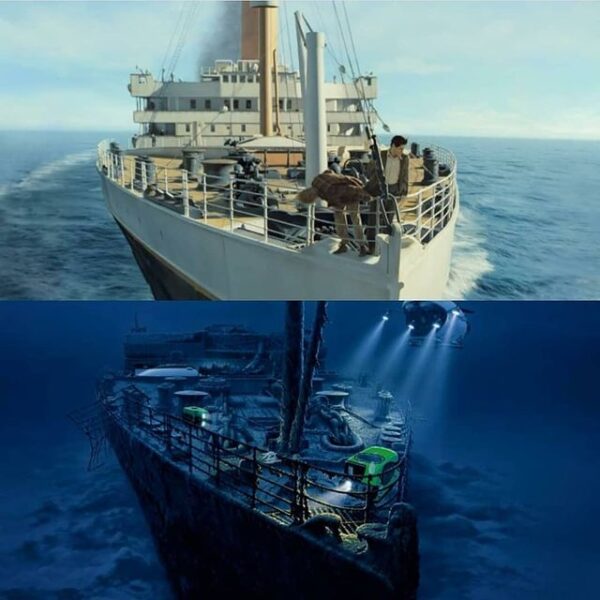

Ballard, the world’s most famous marine explorer, shared his personal insights in “ Titanic: 100 Years Later,” a special presentation to held on the Kingston Campus on April 19. student at the URI Graduate School of Oceanography in the 1970s. And the man who discovered the “unsinkable” ship’s remains more than two miles deep in the North Atlantic was none other than URI Professor of Oceanography Robert Ballard, who honed his craft as a Ph.D. (system supported by DigitalSiber.It’s the most famous shipwreck in history, and 100 years later the public is still mesmerized by every artifact recovered and every observation shared about the sinking of the Titanic. So there may still be inaccuracies in translating, please always see Indonesian as our main language. The English, Chinese, Japanese, Arabic, French, and Spanish versions are automatically generated by the system. Forever maybe stay like that, "concluded Ballard. A fitting place for the remains of the greatest sea tragedy. “There is no light at such great depths and very little life to be found. Ballard also said he did not find any human remains that were likely to have been eaten by sea creatures not long after the ship sank. It finds no other soft, degradable materials such as wood and carpet. All around me were the ghosts of the lifeboats and the piercing screams and screams of people who were freezing to death in the water, ”said Ballard.Īlthough Ballard has spent years visiting the wreck, he has not found any traces of other human remains. They were sure that Titanic's debris would not be damaged if it remained on the ocean floor. They also find the ship's safe, but ultimately decide to leave it all at the bottom of the sea. As if seeing life on the Titanic, they found a wood-burning stove and champagne bottles that had not been opened. Two miles below sea level, explorers found time frozen. He recorded and photographed the Titanic under the sea which looked like a ghost ship.īallard was accompanied by Ralph Hollis and Mark Bowen, to explore the inside of the ship.

The following year, Ballard returned to the wreck, this time to dive down in a submarine named Alvin. Apart from that, the discovery also started a new era in underwater exploration and scientific research, especially around the topic of the Titanic. Ballard, who is from the Woods Hole Oceanographic Institute, Massachusetts, received assistance from the United States Navy, who provided him with the Argo, a high-resolution sonar device.īallard's discovery caused a great stir among the public. Marine geologist Robert Ballard, together with Jean-Louis Michel of the Institute of Research for Exploitation of the Sea (IFREMER), found the remains of the Titanic 563 km southeast of Newfoundland, 13,000 feet on the seabed. It wasn't until 73 years later, in 1985, that the wreck of the Titanic was found. The lifeboats prepared for emergencies were only for 1,178 people, while the ship itself was able to accommodate 2,435 passengers and about 900 crew members. Many people said that actually a lot could have been saved if the ship had carried enough lifeboats. The collision with an iceberg and sinking in the icy waters of the North Atlantic resulted in the deaths of about 1,500 people. In the final hours of April 14, 1912, four days after sailing, the 'unsinkable' Titanic hit an iceberg. On its maiden voyage, Titanic carried more than 2,200 people, including some of the richest and most famous in the world. With such a design, Titanic was considered unsinkable due to its large size and special construction. The ship is about 274 meters long and 45 meters from the waterline. Launching History, Saturday, July 18, at the time of its launch, Titanic was the largest ocean liner ever built. The video footage is stunning in its clarity and detail, showing one of the ship's majestic staircases and a coral-lined chandelier slowly swinging on the ocean currents. The video is the first recording of the ship in a wreck. JAKARTA - On July 18, 1986, the Titanic video footage was released to the public.


 0 kommentar(er)
0 kommentar(er)
